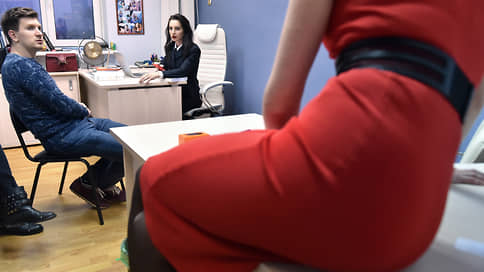Goal-setting in a feminine way – Newspaper Kommersant No. 12 (7457) of 01/24/2023
[ad_1]

The Ministry of Labor will prepare a plan for the first stage of the implementation of the National Action Strategy for Women for the next three months. Olga Batalina, First Deputy Minister of Labor and Social Protection, announced this yesterday at a meeting of the State Duma Committee on Family, Women and Children. First of all, the priorities of the new strategy are to improve the economic situation of women.
At the end of 2022, the government approved a new version of the national action strategy for women for 2023-2030. The main goal of the updated document is “to ensure the principle of equal rights and freedoms for men and women and create equal opportunities for their implementation.” At the same time, the strategy, although it is a “fundamental” document, is advisory in nature and is not provided with funding from the budget.
The government plans to defend women’s rights in a variety of areas – from the labor market to politics. Thus, although women now make up more than half of the population of the Russian Federation and more than half of those with higher education, in the group of “managers” in accordance with the all-Russian classifier of occupations, the share of women is only 46.2%. Women make up the absolute majority in lower wage sectors such as education (82.4% women) and healthcare (79.8%). As a result, with a high level of education and employment, the average wage gap between women and men in the Russian economy is 28% in favor of the latter. Barriers to the expansion of women’s employment, the document states, remain due to “stereotypical ideas about social roles”, which, among other things, leads to a high household burden on women. According to Rosstat estimates, to which the authors of the strategy refer, working women spend 1.5–2 hours or 2–2.5 times more time on housework than men.
Thus, in comparison with the previous version of the strategy, in terms of the economic situation, the positions of women in the Russian Federation have changed little. At the same time, it is clear that the “covid” spread of remote work and the massive program of building public kindergartens have created additional opportunities for women’s employment. The risks of poverty, traditionally higher for women due to the birth of children, should be reduced by a unified system of payments for children from poor families under the age of 18 (for more details, see Kommersant of November 16). Going forward, the new version of the strategy suggests that the government also intends to involve women in the tech sectors of the economy, fight discrimination in the workplace, and give women access to financial and digital wealth-enhancing tools.
In terms of healthcare, the position of women, as follows from the strategy, on the contrary, is somewhat better than that of men, primarily due to higher life expectancy (women – 73.8 years, men – 68.4 years) and the development of a system of long-term care for the elderly and the disabled; and the establishment of a separate geriatric care within the public health system. The main efforts of the state in this area will be related to the dissemination among women of the values of a healthy lifestyle, including for the preservation of reproductive health.
Finally, another section of the strategy is devoted to the social well-being of women: it focuses on reducing the number of women in prisons and liberalizing the Criminal Code in relation to those who have not committed serious crimes. Less attention is paid to violence against women, which is not surprising: the statistics reflecting this problem are concentrated in different departments and often do not allow to see reliable dynamics.
[ad_2]
Source link






